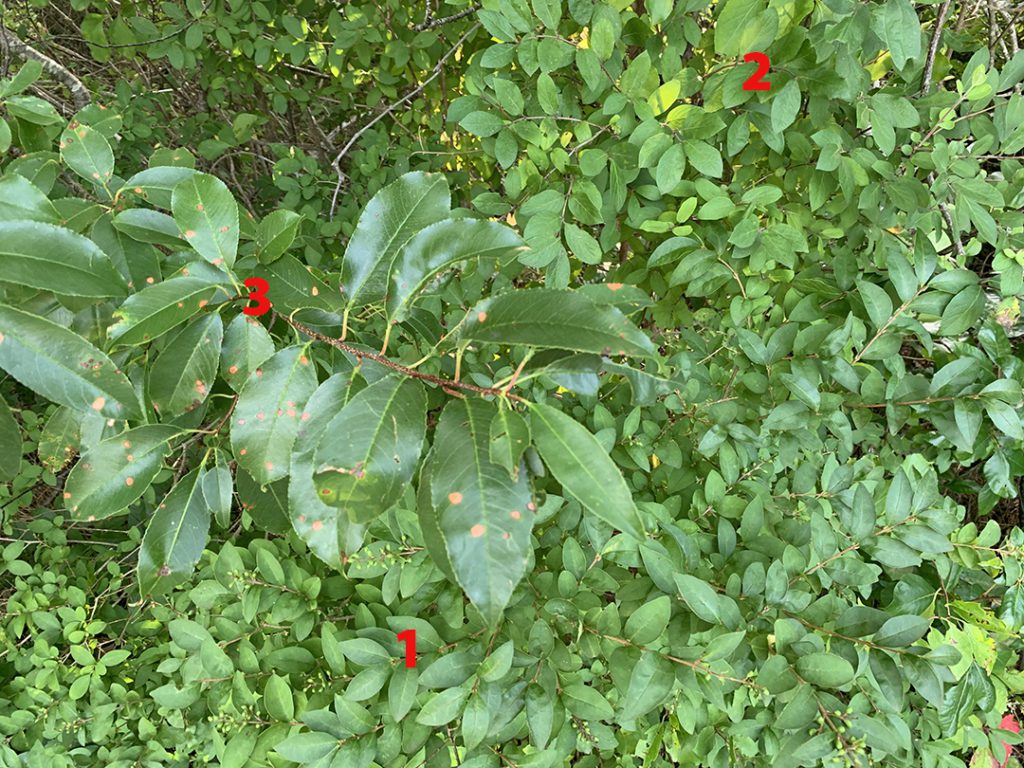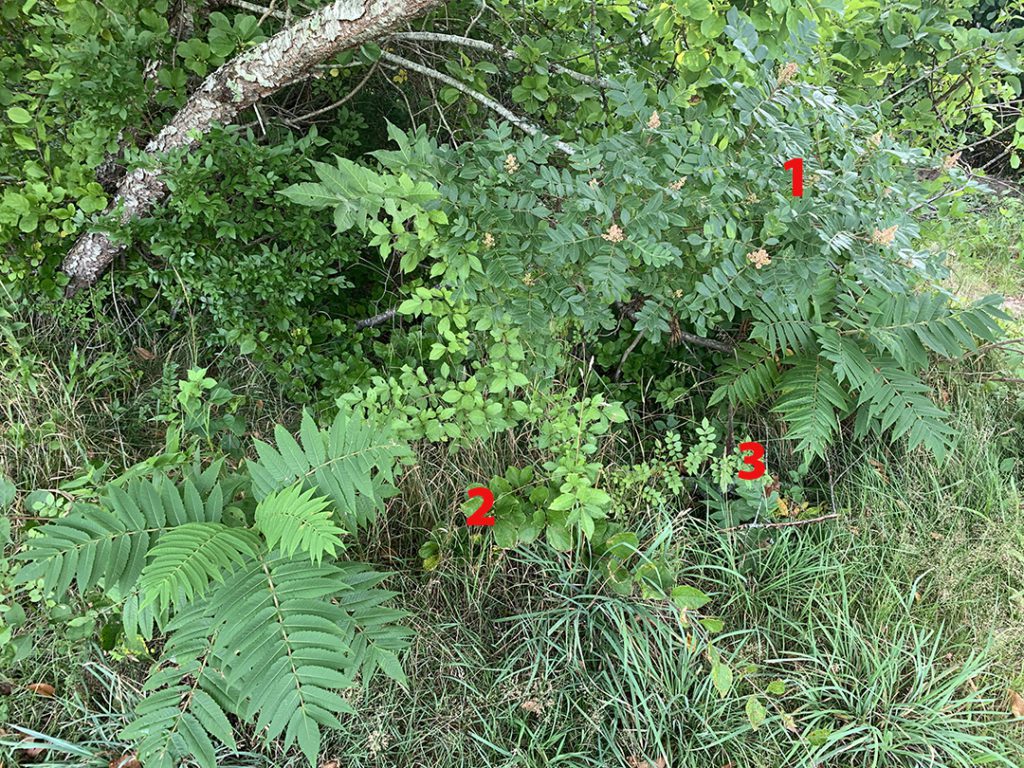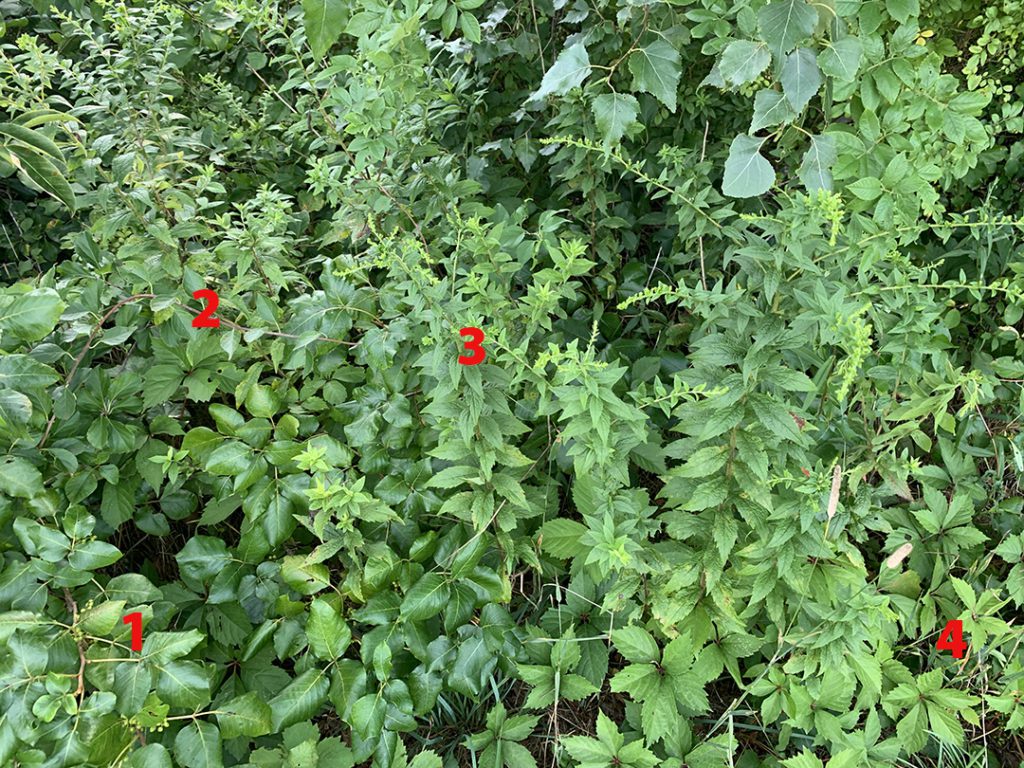Taming Your Cape Cod Jungle
Taming Your Cape Cod Jungle
It happens in every landscape on Cape Cod. Birds sit in shrubs and trees after eating fruits from other plants, continually depositing the seeds in your yard. The sea breeze does its part to spread the finer seeds and before you know it there are all sorts of plants growing in your gardens that you may or may not want. This post talks about what happens, which plants to look for, and how to deal with the constantly encroaching jungle.
Unwanted plants are constantly springing up around our trees and shrubs, and unless the homeowner or landscaper is always looking out of them, they grow quickly before we’re even aware that they’ve arrived. Some people move into a newly purchased home and don’t realize that many of the plants in their landscape are invasive species. Along with these persistent plants are some native shrubs, trees and vines that are also aggressive. When all of these are left unchecked, the landscaping becomes overrun and the desirable plants hidden.
Not only do the bird-and-breeze deposited plants hide and smother your shrubs, trees and perennials, but they aren’t content to stop at the outer perimeter of your property. Every year they creep a bit farther into your flowerbeds and lawns, ultimately making your property seem a great deal smaller than it really is.
Here are a few to look out for. You can use Google Image to compare these names to the plants you see in your yards and gardens, and we’ve pictured a few of them below. (Note that this isn’t a complete list of invasive plants on the Cape…it’s just a list of the most common varieties that sneak into yards and gardens.) We’ve also separated this list of plants into native and non-native. Native plants aren’t invasive, but they can either be aggressive or too numerous; just because they are indigenous to the region doesn’t mean that you have to let every one of them stay.
Non-Native “Cape Cod Jungle Plants” include: Oriental bittersweet (Celastrus orbiculatus); Japanese honeysuckle and other bush honeysuckles (Lonicera japonica and other species); Autumn olive (Elaeagnus umbellata); Porcelain-berry (Ampelopsis brevipedunculata); Burning bush (Euonymus alatus); Wild rose (Rosa multiflora). All of these have little redeeming value and should be removed when they appear.
Native “Cape Cod Jungle Plants” include: Poison ivy (Toxicodendron radicans); Virginia creeper (Parthenocissus quinquefolia); Sumac, smooth and staghorn (Rhus glabra, and Rhus typhina); Chokecherry (Prunus virginiana); and Eastern red cedar (Juniperus virginiana). These plants are more desirable for wildlife support. A number of birds, for example, depend on the wild chokecherry and red cedar fruit, so if there is space in your landscape you could let some of these grow to maturity.



So how can you tame the jungle?
- Learn to recognize this plants when they are small. It’s far easier to dig out young ones with a shovel than it is to remove mature plants from your shrubs and trees.
- If you see large plants, cut them off at ground level. If the vines are too large to pull off of trees or other plants, let them die back by themselves. They will eventually fall from where they’ve grown.
- Mulch around your shrubs and trees with an inch or two covering every year. More isn’t better, because many of these seeds will germinate on top of a pile of thick mulch. It is far better to spread a thinner layer of mulch annually than a thick layer every few years. Most weed seeds germinate with moisture and sunlight, so covering them prevents the light from triggering germination.
- If the jungle has overgrown areas of your property, you might need professional assistance to cut it out and haul it away. Once the problem plants are gone, be on the lookout for shoots and seedlings that are trying to make a comeback from remaining roots or seeds in the soil.
Subscribe To Our Newsletter
Sign up for our weekly email about sales and events.
